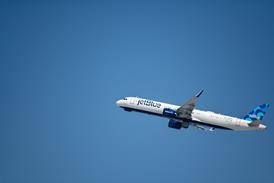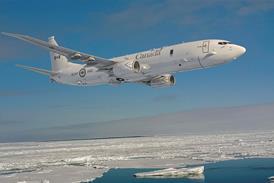Boeing and Northrop Grumman have been selected by the US Navy and Defense Advanced Projects Agency (DARPA) to study a naval unmanned combat air vehicle (UCAV-N).

Boeing is already working with DARPA and the US Air Force to demonstrate a land-based UCAV capable of performing post-2010 suppression of enemy air defences (SEAD) and strike missions. Flight tests with two demonstrators are planned for next year.
The 15-month first phase of the UCAV-N programme will cover trade studies, analyses and preliminary design of a vehicle suitable for surveillance missions, as well as SEAD and strike, while focussing on shipboard integration issues.
Both companies have received $2 million contracts, and Northrop Grumman will contribute a further $1.35 million under a cost-sharing agreement. A demonstration decision will be taken at the end of the preliminary design phase.
UCAVs are also the focus of additional micro adaptive flow control (MAFC) projects announced by DARPA. Adaptive flow control involves the use of small-amplitude inputs to achieve large-scale benefits. Among the five new projects announced are:
• Honeywell will incorporate flow control modules on the stators and inlet guide vanes of a UCAV engine to reduce specific fuel consumption by 17% and weight by 15%;
• Massachusetts Institute of Technology will use adaptive flow control in the integrated engine and inlet system of a UCAV to improve stall and surge margins;
• Boeing will use MAFC to control jet exhaust shear layers on short take-off and vertical landing aircraft to reduce acoustic loads close to the ground by 8dB.
Projects already under way are using adaptive flow control to reduce downforce on the wing of the Bell Boeing V-22 tiltrotor in the hover, and to eliminate the core thrust reverser on the Boeing C-17's Pratt &Whitney F117 turbofan by improving mixing of the hot core and cold fan flows.
Source: Flight International























